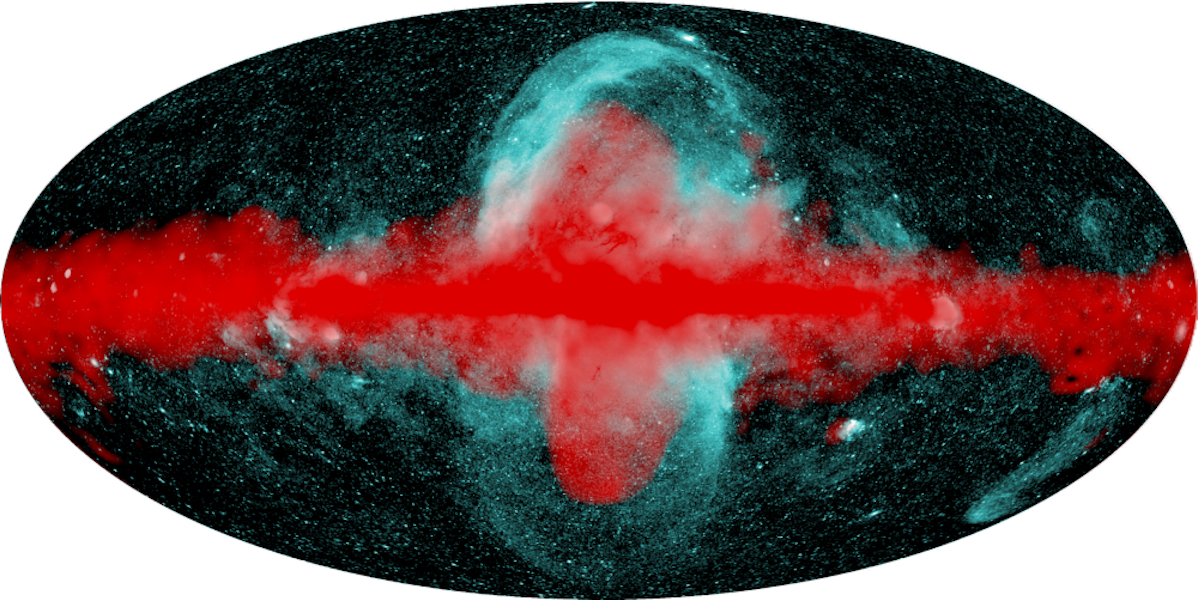
 Credit: Peter Predehl Nature, vol. 588, pp 227-231
Credit: Peter Predehl Nature, vol. 588, pp 227-231
Connecting the Bubbles
One of the most surprising structures associated with our home galaxy, the Milky Way, are the gamma-ray emitting, bubble-like structures extending more than 25,000 light years above and below the center of the Galaxty. These bubbles were discovered by the Fermi Gamma-Ray Space Telescpe about a decade ago, and now affectionately known as the "Fermi Bubbles" by astronomers. Clearly the result of some remarkable outpouring of energy near the center of the Milky Way, the event (or series of events) that blew the "Fermi Bubbles" is still not entirely understood. A new all-sky X-ray map obtained by the eROSITA telescope on the Spektr-RG spacecraft may help solve this problem. The image above shows composite all-sky maps centered on the center of the Milky Way (so that the disk of the Milky Way stretches from left to right at the middle of the image, and the center of the Milky Way is at the center of the image). The gamma-ray map from Fermi is shown in red, while the X-ray map from eROSITA is shown in blue. The Fermi image shows the Fermi Bubbles emanating from the center of the Milky Way above and below the disk of the Galaxy. The X-ray image from eROSITA also shows similar X-ray bubbles above and below the Galaxy, but about twice as large as the Fermi bubbles, each having a diameter of about 45,000 lightyears. Analysis of the X-ray "eROSITA Bubbles" suggest that these bubbles are probably the remnants of an enormous but temporary burst of energy from Sgr A*, the 4-million solar mass black hole at the center of the Milky Way, about a Fermi bubble diameter away from us. The outburst might have happened if Sgr A* swallowed a massive cloud of gas (or perhaps some unfortunate star or group of stars) a few million years ago, and, for a million years or two, formed a disk of accreting matter and shot a particle beam into space perpendicular to the Galaxy's disk, blowing out material that we seen now as the Fermi/eROSITA bubbles. Sometime after this feeding frenzy, the monster black hole afterwards fell into its current sleepy state.
Published: January 18, 2021
<
HEA Dictionary ● Archive
● Search HEAPOW
● Other Languages
● HEAPOW on Facebook
● Download all Images
● Education ● HEAD
>

Each week the HEASARC
brings you new, exciting and beautiful images from X-ray and Gamma ray
astronomy. Check back each week and be sure to check out the HEAPOW archive!
Page Author: Dr. Michael F. Corcoran
Last modified Tuesday, 27-Feb-2024 10:06:38 EST


